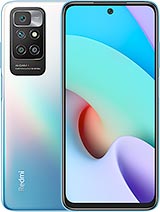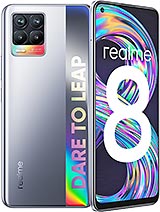Xiaomi Redmi Note 8 2021 review

The competition
The original Redmi Note 8 came out in 2019 and represented a pretty solid value offer at the time. The refreshed Redmi Note 8 2021 edition borrows most of its specs. The main difference is a chipset swap, which is arguably more of a downgrade than anything else due to the newfound 1080p video capture limit.
During this time, however, the budget scene has changed drastically, and there are plenty of compelling offers to consider in the sub-EUR 200 category. Things like OLED or higher refresh rate displays, increased ingress protection, stereo speakers and more modern and capable cameras, faster charging are now attainable in this price bracket. Not really all in one phone, of course. You still have to pick your priorities, but there are plenty of alternatives to explore.

Ironically, most reside within Xiaomi's own lineup. At the time of writing this review, a Redmi Note 8 2021 can be had for just shy of EUR 160. For right around as much, you can also get the Redmi 9T, which has stereo speakers and a bigger battery, with noticeably better battery life. Granted, with a slightly more-boring design and Gorilla Glass 3, and it's also an outgoing model, too.
But you only need to put down a few more bucks to get the Redmi Note 10 instead. This way, you not only get stereo speakers and a bigger battery but also 33W fast charging and probably best of all - a Super AMOLED display. Also, thanks to the Snapdragon 678 chipset, 4K video capture is back on the table. If you have slightly different priorities instead, there is the shiny new Redmi 10, which has a simpler LCD, but one that can do 90Hz, still packs a 5,000 mAh battery and most-notably, is equipped with a new 50MP, f/1.8 main camera.


Xiaomi Redmi Note 10 • Xiaomi Redmi 10
Moving past camp Xiaomi, the Realme 8 instantly stands out as a great competitor. Its highlights include a 6.4-inch Super AMOLED panel with HDR10 support and 657 nits of peak brightness according to our tests, with an under-display fingerprint reader, a 5,000 mAh battery, with 30W charging support, a faster MediaTek G95 chipset and a 64MP main camera. Granted, no stereo speakers on this one either.
Another worthy opponent would be the Moto G30 - a recent phone with a big main camera sensor, good camera performance overall and a 90Hz display. However, it settles for a less than ideal 720p resolution in the same 6.5-inch diagonal. Battery life is a bit better, but no stereos speakers either. We've included the Moto G30 because it's one of the few handsets to run on clean Android, so if that's your thing, the Moto G30 is pretty much your only option in most markets.
Verdict
The original Redmi Note 8 from 2019 is one of the most successful models the company has ever put out, recently surpassing 25 million in total sales.
However, the same formula that made it popular would no longer work as easily a couple of years later. Worse still, the Redmi Note 8 (2021) is arguably worse than its vanilla predecessor. The processor swap from a Snapdragon 665 to a MediaTek Helio G85 has resulted in the same performance numbers, plus an upgraded Bluetooth 5.2 radio, but 4K video capture is no longer available.
Even Xiaomi itself already has better phones in the same price bracket, such as the Redmi Note 10 or the Redmi 10.

It is absolutely possible that we might see a further decrease in the Redmi Note 8 2021's pricing or some aggressive carrier subsidies and that would help its desirability. That scenario, however, is the only one where we currently see ourselves recommending the Redmi Note 8 2021.
Pros
- Memorable and eye-catching design, dual Gorilla Glass 5, advertised extra internal water-repelling coating.
- Latest MIUI 12.5.6 on top of Android 11, chuck full of features.
- Solid budget performance, with better GPU numbers than the original Redmi Note 8.
- Decent all-round camera, though the hardware is starting to show its age on the current smartphone scene.
- Standalone microSD, 3.5mm jack, FM radio, IR blaster.
Cons
- Decent display, but worse than the original Redmi Note 8.
- Solid battery life, but worse than the original Redmi Note 8.
- Single and largely unimpressive speaker.
- AI camera enhancement has issues.
- Video capture is limited to 1080p, while the original Redmi Note 8 does 4K.
Reader comments
- Anonymous
- 12 Jan 2022
- rpJ
Slow motion was downgraded too from 240 fps to 120 fps👎🏼 so be aware (even GSMArena didn't notice)
- Ian Setiawan
- 05 Oct 2021
- DEP
I thought only Samsung that made little downgrade to their New phones. Specially changing UFS back to aged eMMC typr storage. Goodluck then, Xiaomi!
- Anonymous
- 04 Oct 2021
- yJp
I don't understand why release this phone with old name?

